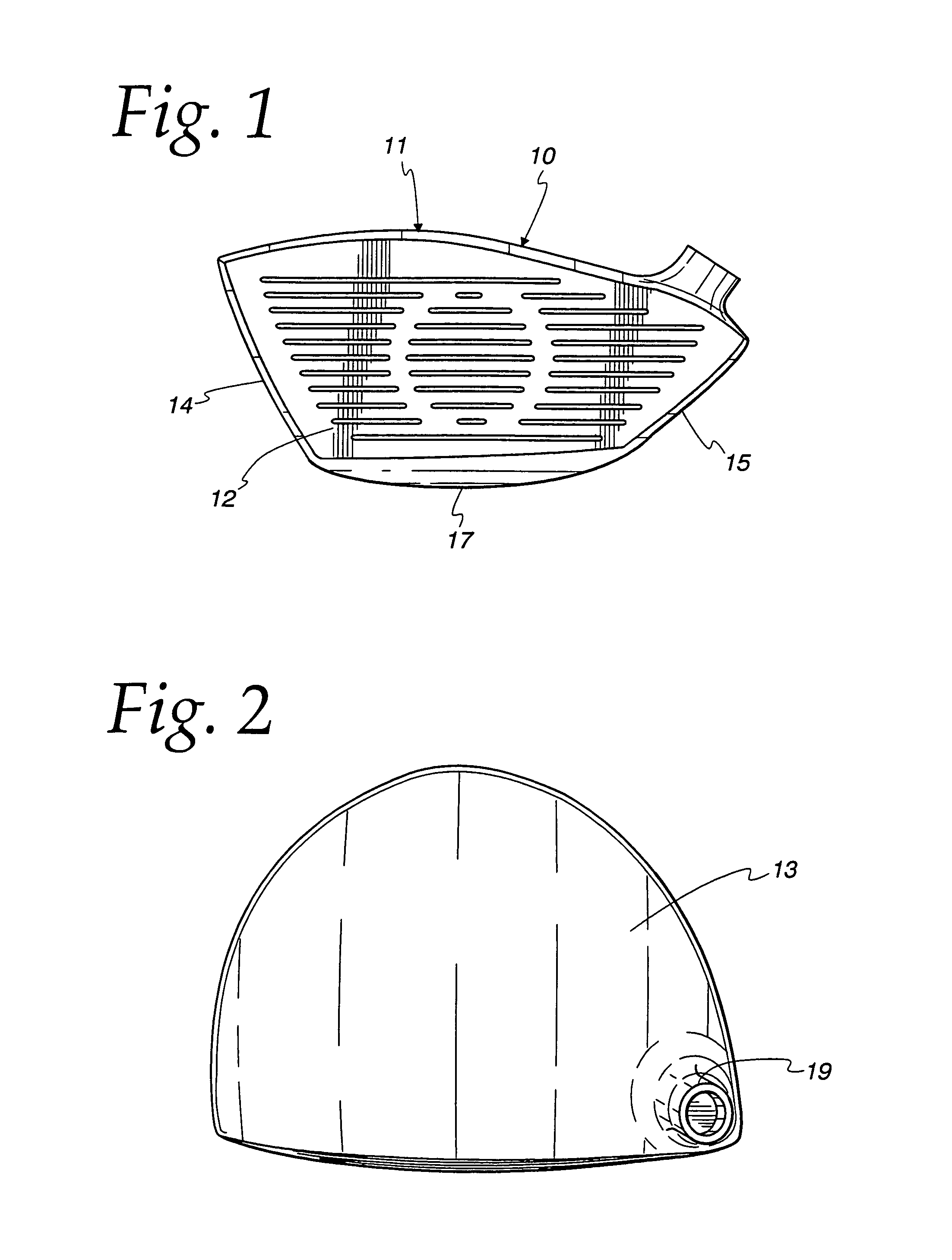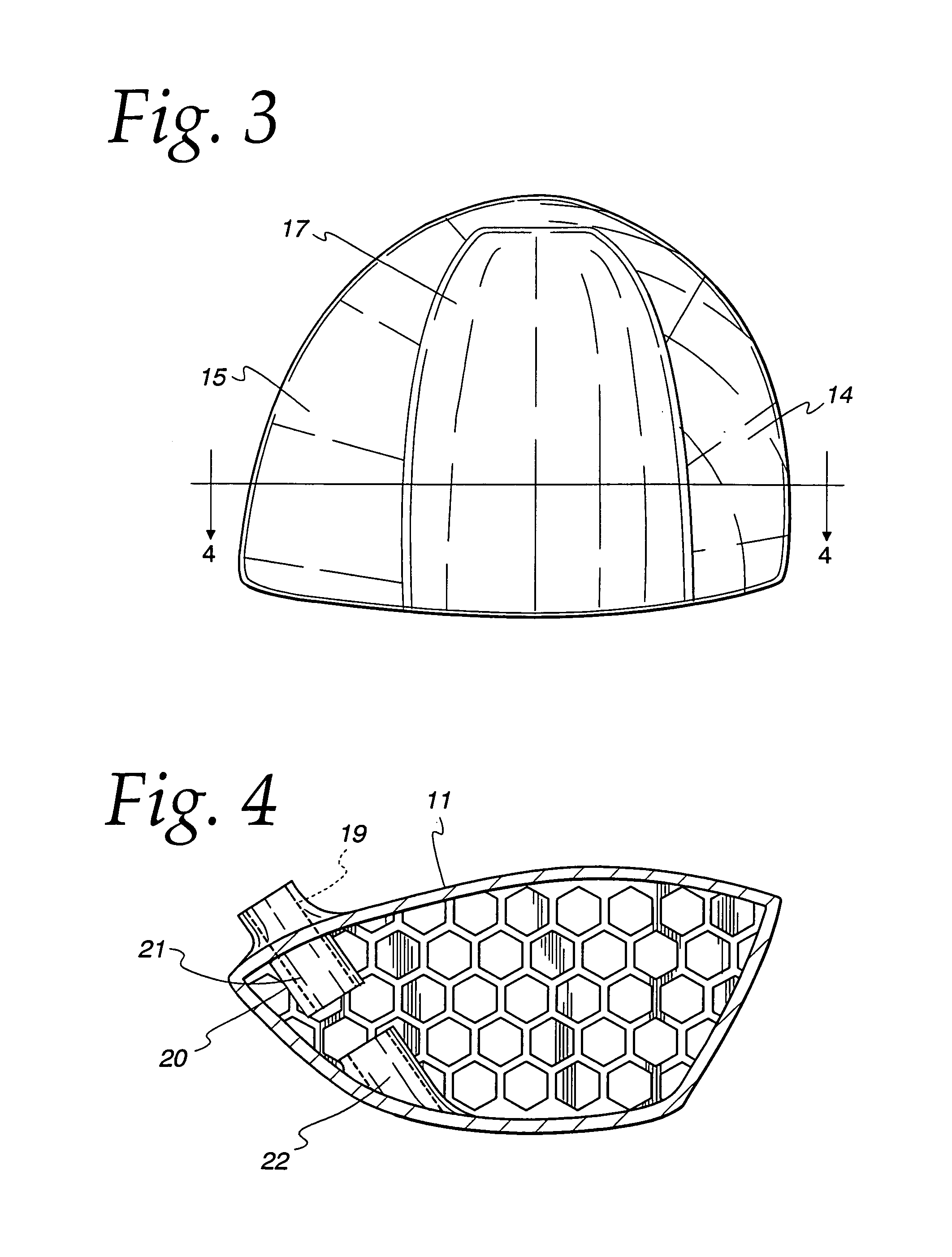Golf club face flexure control system
a golf club and control system technology, applied in the field of golf club design, can solve the problems of difficult to increase the perimeter weighting effect of the club head, high cost of forging technology, and large misunderstood, and achieve the effect of increasing the severity of the surface contour, improving the design, construction and performan
- Summary
- Abstract
- Description
- Claims
- Application Information
AI Technical Summary
Benefits of technology
Problems solved by technology
Method used
Image
Examples
Embodiment Construction
[0130]Referring to the drawings, it should be understood that FIGS. 1 to 16 relate to the new subject matter in the present application and that FIGS. 17 to 32 correspond to FIGS. 1 to 16 in parent application, U.S. Ser. No. 09 / 344,172, Filed: Jun. 24, 1999.
[0131]Referring initially to FIGS. 1 to 16, a club head 10 is illustrated according to the present invention that includes a standard body 11 and interchangeable face walls 12. The body 11 may be formed in forward and rear pieces as described in my U.S. Pat. No. 5,888,148.
[0132]The body 11 includes an upper crown wall 13, a toe wall 14, a heel wall 15, and a sole plate 17. An external portion 19 of the hosel assembly 20 shown in FIG. 4, projects upwardly from the crown wall 11.
[0133]The hosel assembly 20 includes an upper portion 21 and a spaced lower portion 22.
[0134]The crown wall 13, the toe wall 14, the heel wall 15, and the sole plate 17 together form the perimeter wall that surrounds the ball striking face wall 12.
[0135]As ...
PUM
 Login to View More
Login to View More Abstract
Description
Claims
Application Information
 Login to View More
Login to View More - R&D
- Intellectual Property
- Life Sciences
- Materials
- Tech Scout
- Unparalleled Data Quality
- Higher Quality Content
- 60% Fewer Hallucinations
Browse by: Latest US Patents, China's latest patents, Technical Efficacy Thesaurus, Application Domain, Technology Topic, Popular Technical Reports.
© 2025 PatSnap. All rights reserved.Legal|Privacy policy|Modern Slavery Act Transparency Statement|Sitemap|About US| Contact US: help@patsnap.com



